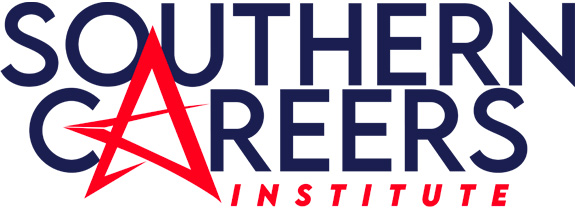Welding, the process of joining metal using heat and electricity, is required in all types of manufacturing and construction. Whether it’s a race car, a skyscraper, an airplane, or metal patio furniture, a welder is needed to solder the metal components together.
Always in high demand, welders benefit from competitive salaries and job security. It is also a career option that more women should look into as many welds require the meticulousness of smaller hands. Here are the three main types of welding and their applications.
Shielded Metal Arc Welding (SMAW)
Of the types of welding, Shielded Metal Arc Welding (also called Stick Welding), is the most common. Often referred to simply as Arc welding, it is the oldest and most cost-effective form. The “arc” is the intense cone of heat where metals melt and join.
For this process, an electrode or “stick” is covered with a metal coating that melts and forms a gas shield as heat is applied. When electricity passes through the coated electrode tip and touches the base metal, the arc is struck.
At this point, the metal electrode melts into the weld pool and becomes part of the weld when the metal solidifies. This process forms slag, a glass-like by-product that must be chipped off.
Stick welding works best on thicker metals like stainless steel, high alloy steel, low alloy steel, carbon steel cast iron, and ductile iron.
It is used in the fabrication of structural steel, shipbuilding, fixing farm equipment, welding pipe, power plant construction, and any welding job using metal that is 1/16 inch thick or more. It is not a good choice for thin sheet metals.
MIG – Gas Metal Arc Welding (GMAW)

Metal Inert Gas welding uses a spool of solid-steel wire that is fed through the contact tip of the MIG torch. It is sometimes called semi-automatic welding because the welding wire, electricity, and the shielding gas are fed through the MIG “gun” simultaneously creating the weld and protecting it from the air.
The MIG welding machine continuously fills the joint being welded and there is no need to change out electrodes between welds. It uses a combination of inert gases; Argon, Carbon Dioxide, and Helium.
Four components of MIG welding:
- A power supply provides electricity to create heat.
- A wire feed system feeds the wire from a spool to the weld joint.
- A handle with a trigger controls the wire feeder.
- A shielding gas protects the weld from the air.
The main purpose of MIG welding is for sheet metal work and high-production manufacturing. It can be used on aluminum, mild steel, and stainless steel.
It is preferred for indoor welding where drafts will not displace the gas shielding, but can also be used in the field with wind blocks. It is used for automobile repairs, metal fencing, rails, and tractor repairs.
TIG – Gas Tungsten Arc Welding (GTAW)
Tungsten Inert Gas welding uses argon gas for welds. It is one of the most difficult welding processes to learn, but it is also very versatile when it comes to different types of metals.
Requiring the use of two hands, TIG welding is done by holding the TIG torch with one hand and adding the filler metal to the joint being welding with the other.
A slow process, it produces a high-quality weld when done right. TIG welding is used for critical weld joints where small, precise welds are needed and for welding metals other than common steel.
Because it does not produce toxic fumes or smoke, it is ideal for welding in confined spaces. TIG welding makes use of tungsten, a very hard and slightly radioactive brittle metal.
It is made into an electrode that creates an arc that can maintain a temperature of up to 11,000 degrees Fahrenheit. When two pieces of metal begin to melt within the arc, the welder fills the joint manually dipping a welding wire into the arc.
A single piece of metal is then created. TIG welding is used by automobile manufacturers on fenders and in the construction of spacecraft and airplanes. Artists like using TIG welds for sculpture because of its excellent quality.
Other Types of Welding
With new innovations, other types of welding have become popular. A few different types of welding are listed below.
- Flux Cored Arc Welding. Similar to MIG welding, Flux Cored Arc Welding uses a flux core on the electrode. This shields the weld from the air making it possible to perform welding outdoors.
- Robotic Arc Welding. Driven by the increased demand for productivity and quality, robotic welding has become more popular and more affordable. As the name implies, welding is done automatically by a machine. A human is needed to set up the equipment.
All types of welding involve high voltage that can be dangerous if proper precautions are not taken. Proper welding supplies should include flame-proof leather welding gloves, protective flame-retardant clothing and shoes, a welding cap, a face shield, and proper well-fitting protective eye wear.
Prepare For A Welding Career
It’s time to be in control of your life. If you are interested in welding as a career, enroll in a training program that can give you the education and training you need to open doors.
Southern Careers Institute offers a 7-months long program in welding that will prepare you to work in Shielded Metal Arc Welding (stick welding), Gas Metal Arc Welding (GMAW/MIG), Gas Tungsten Arc Welding (GTAW/TIG), and Flux Cored Arc Welding (FCAW).
Upon graduation, you will be prepared to work as a TIG, MIG, or combo welder, a sheet metal worker, a pipefitter, or a fabricator. You can immediately begin accruing the hands-on experience hours needed to test for certification.
Visit our website or call us today at 1.888.SCI.TEXAS. Let our experienced admissions team guide you through the process to begin making your dreams come true.
Sources
https://www.bls.gov/ooh/production/welders-cutters-solderers-and-brazers.htm#tab-6
https://www.gowelding.org/
https://www.sciencedirect.com/topics/materials-science/shielded-metal-arc-welding
https://www.twi-global.com/technical-knowledge/job-knowledge/robotic-arc-welding-135
Blog Disclaimer: Information stated in this blog is for general information purposes only. SCITexas.edu does not assume or guarantee income earning potential or salary expectations based on the programs offered at Southern Careers Institute. Career and program information stated in this blog does not guarantee that programs and specifics are offered at Southern Careers Institute.
This article was published on: 03/2/20 3:00 PM
* SCI does not guarantee employment or a starting salary upon graduation, completion, or withdrawal from SCI. As an accredited post-secondary institution, SCI has various federal financial assistance programs available for students who qualify and are enrolled in SCI programs. This does not apply to seminar students.
GI Bill® is a registered trademark of the U.S. Department of Veterans Affairs (VA). More information about education benefits offered by VA is available at the official U.S. government Web site at http://www.benefits.va.gov/gibill.

